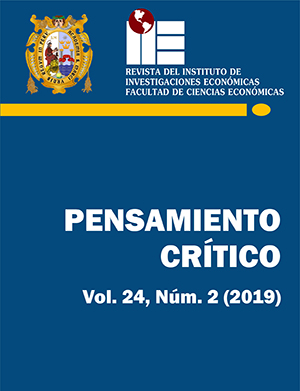Impact on the institutional budget of low-complexity medical care
DOI:
https://doi.org/10.15381/pc.v24i2.17451Keywords:
outpatient service, primary care, medical care, budgetAbstract
The present study analyses the impact on the National Ophthalmological Institute (INO)’s budget executed in outpatient services due to medical care for patients with low-complexity pathologies, who should be treated in the primary care centers, during the period 2010-2015. Pathologies were identified, medical consultations were quantified and the budget executed in outpatient services and low-complexity pathology was estimated. The study concludes that the impact of medical care on patients with low-complexity pathologies represents 23, 54% of the INO’s budget executed in outpatient services during the study period. This level represents a reduction of 36% in consultations for patients with high-complexity pathologies. Moreover, out of the total budget executed in low-complexity pathologies, 65% refers to general consultation (ophthalmological medicine) and 35% to refraction test (visual acuity measurement). On the other hand, it is found that the budget executed in outpatient services during this period represents 21% of the INO’s institutional budget. The estimated impact is considered important; therefore, its reduction and/or correction are recommended.
JEL: I1
Downloads
Published
Issue
Section
License
Copyright (c) 2020 Marco Antonio Cuadros Talattino

This work is licensed under a Creative Commons Attribution-NonCommercial-ShareAlike 4.0 International License.
THE AUTHORS RETAIN THEIR RIGHTS:
a. The authors retain their trademark and patent rights, and also on any process or procedure described in the article.
b. The authors retain the right to share, copy, distribute, execute and publicly communicate the article published in Pensamiento Crítico (for example, place it in an institutional repository or publish it in a book), with recognition of its initial publication in Pensamiento Crítico.
c. The authors retain the right to make a subsequent publication of their work, to use the article or any part of it (for example: a compilation of their works, notes for conferences, thesis, or for a book), provided they indicate the source of publication (authors of the work, journal, volume, number and date).






